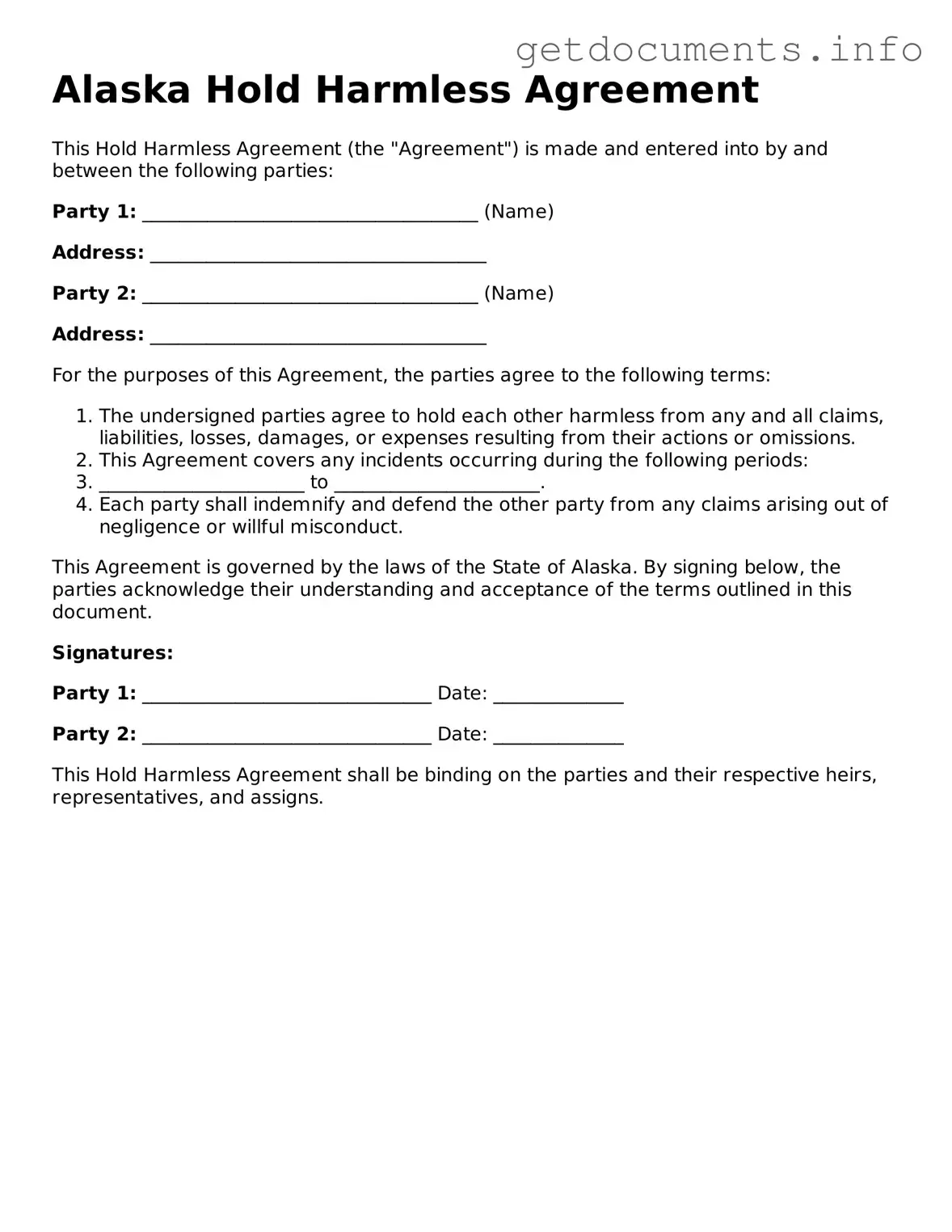The Alaska Hold Harmless Agreement form serves as an important legal document designed to protect individuals and organizations from liability in various situations. This agreement outlines the responsibilities of the parties involved, specifying that one party agrees to assume the risks associated with certain activities or events. By signing this form, individuals acknowledge that they will not hold the other party accountable for any injuries, damages, or losses that may arise during the specified activity. Key elements of the form include clear identification of the parties, a detailed description of the activities covered, and the specific risks involved. Additionally, the agreement often includes provisions regarding insurance and indemnification, ensuring that both parties understand their rights and obligations. Overall, the Alaska Hold Harmless Agreement is a valuable tool for fostering trust and clarity in various contractual relationships, particularly in recreational, commercial, and community-based activities.
